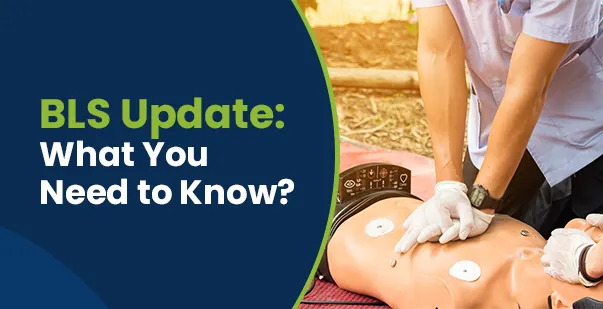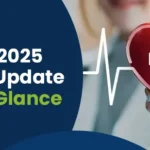Table of Contents:
- Introduction
- Significance of Updating BLS Guidelines
- What to Know About the 2020-2025 BLS Guidelines?
- Who Needs to Abide to the BLS 2025 Updates?
- BLS Updates: How they Affect your BLS Certification?
- Conclusion: Stay Up-to-date to Save Lives!
Introduction
The lifesaving techniques of BLS (Basic Life Support) maintain circulation and oxygenation of the brain and other vital organs until professional help arrives. Even as a bystander, you should follow the appropriate protocols or algorithms to deliver effective life support or any resuscitation service. However, did you know these techniques are periodically updated?
Read on to learn about the latest BLS updates and ensure you are aligned with the most up-to-date protocols!
Master BLS Now
Get BLS certified with confidence
Significance of Updating BLS Guidelines
The current BLS guidelines, including CPR and the use of AEDs, are continuously reviewed and updated by various organizations. These updates are made based on new research and advancements in medical science or data analysis through experiences. The goal of these updates is to improve the quality of life support, which in turn enhances survival rates and patient outcomes.
For example, alterations in compression depth or the sequence of steps in CPR may be introduced based on recent findings that aim to improve victims’ survival rates. If you work in the healthcare environment, you must be familiar with the latest protocols, as you will be expected to adhere to best practices.
These BLS updates are informed by advice from the ILCOR (International Liaison Committee on Resuscitation). ILCOR comprises representatives from leading resuscitation organizations worldwide. The group reviews the most current scientific data on how to effectively deliver basic life support techniques to ensure the best chance of survival for victims. They update their recommendations for life-saving techniques every five years. The last updates were made in 2020. While there are no new BLS guidelines for 2025, make sure to review the past updates to maintain your latest knowledge in BLS.
Read More: Understanding Life Support and Ethical Issues
What to Know About the 2020-2025 BLS Guidelines?
BLS involves simple steps like chest compressions, rescue breaths, and the use of AED (Automated External Defibrillator). These techniques are periodically updated as new information and technologies emerge based on the latest research and experience. Here are some of the important updates in the current CPR BLS guidelines.
Sixth Link to Adult Chain of Survival
BLS sequence, according to the 2020 ILCOR guidelines, is an operational framework used to assess the response in victims of OHCA (Out-of-Hospital Cardiac Arrest). Prior to the update, it had five links:
- Immediate Recognition of the Problem – If an individual suddenly collapses, stops breathing, or loses consciousness, you must recognize the emergency and take fast action.
- Early CPR – Begin administering CPR immediately. Every minute without CPR intervention reduces the chances of survival. Start chest compressions to maintain blood flow to the heart and brain.
- Rapid Defibrillation – Use an AED (Automated External Defibrillator) as soon as possible to deliver an electric shock and restore the victim’s normal heart rhythm.
- Advanced Medical Care: Once advanced professional help arrives, it will provide advanced treatment, including oxygen and medication, to stabilize the victim.
- Post-Cardiac Arrest Care – After the victim’s heart has been restarted, ongoing care, including hospital care and monitoring will be provided until they fully recover.
The sixth link, recovery, was added for both in-hospital and out-of-hospital cardiac arrest episodes in the BLS updates. This sixth link focuses on providing proper support for the physical, cognitive, and emotional well-being of the victims. The recovery process will extend long after initial hospitalization.
Ventilation
Rescue breathing or ventilation in CPR helps deliver oxygen to someone who has stopped breathing. When breathing stops, it deprives the brain of oxygen, leading to severe damage or even death. The BLS guidelines were updated to reflect the best practices for providing ventilation during resuscitation. The BLS instructions advise the responder to administer one breath every six seconds for respiratory arrest with or without an advanced airway. These changes apply similarly to cardiac arrest victims with an advanced airway.
Early Use of Epinephrine
Epinephrine (Adrenaline) is a medication that aids in restarting the heart in certain cases of cardiac arrest, especially if the episode is due to shockable rhythms like ventricular fibrillation. The unadjusted rate of survival increased from 16.1% to 27.9% for cardiac arrests due to ventricular fibrillation or pulseless ventricular tachycardia.
According to 2020 BLS guidelines, administering epinephrine as soon as possible during resuscitation efforts improves the chances of survival. In advanced life support, the medication should be provided once every three to five minutes to achieve the best outcome.
Intravenous Access Over Intraosseous Access
When administering medications like epinephrine during CPR, intravenous (IV) access is preferred. IV access allows for faster and more efficient drug delivery directly into the victim’s bloodstream. However, establishing IV access can be challenging and time-consuming, as it involves injecting medication into the bone marrow. While IV is the preferred method, intraosseous (IO) access remains a reliable option in emergencies.
Rescue Breaths in Pediatric Life Support
For CPR on infants or small children, the recommended ratio is now 15 chest compressions followed by two rescue breaths per cycle. This should be continued until advanced life measures or support is available. As per previous BLS updates, the recommendation was 30 compressions with two gentle breaths per cycle.
The 2020 updates also modified the guidelines for providing life support to infants and children with a pulse but inadequate or absent breathing. ILCOR now recommends providing one breath every two to three seconds, equating to 20 to 30 breaths per minute. Previously, the recommendation was to provide one breath every three to five seconds, resulting in 12 to 20 breaths per minute.
Point-of-Care Ultrasound Changes
The 2020 ILCOR guidelines for adult basic and advanced life support include changes to point-of-care ultrasound. If an experienced sonographer is available and using the technique will not interfere with other life-saving measures, ultrasound can be used to gain additional information about the victim’s heart condition and the cause of cardiac arrest. However, it’s important to note that research has not fully established the effectiveness of this strategy.
Alterations in Neuroprognostication
ILCOR now recommends using multiple modalities, per the latest BLS updates, to predict neurological recovery and plan patient care. This approach improves decision-making accuracy, thereby enhancing patient outcomes.
Revised Cardiac Arrest in Pregnancy Advice
BLS updates also include changes to the treatment of cardiac arrest in pregnant women. The recommended time for considering cesarean delivery in cases with no return of spontaneous circulation (ROSC) was previously ‘if no ROSC in four minutes’. According to the latest guidelines, this has been adjusted to ‘if no ROSC in five minutes’.
Read More: A Comprehensive Guide on How to Use AED on Pregnant Woman
Who Needs to Abide to the BLS 2025 Updates?
Anyone holding a BLS card or providing BLS training must abide by the current AHA BLS guidelines. Both bystanders and healthcare professionals should stay updated on these changes to deliver the best possible care to victims experiencing cardiac arrest or other medical emergencies. These updates should be incorporated into the new training schedules.
Every training institution, healthcare provider, and anyone responsible for offering safe BLS and CPR should stay informed about the latest advice and practices. Medical professionals such as doctors, dentists, nurses, and others, including lifeguards and police officers, are expected to stay current with the latest BLS guidelines. Many employers mandate regular re-certification to ensure that employees remain up to date with any changes.
A BLS certification lasts for two years from the date of issue. Even if there are changes in the BLS instructions in the year following your certification, you can still consider yourself certified. However, once your credential expires, sign up for a renewal course to cover the latest updates since your last certification.
Conclusion: Stay Up-to-date to Save Lives!
BLS updates were established based on research and the accumulated knowledge developed over decades of practice. As the medical field advances, new discoveries may lead to changes in these guidelines to ensure the best outcomes. Staying current with these guidelines is not just about fulfilling your professional obligation. It empowers your readiness to provide life-saving treatment to those in need and save lives. If you want to stay prepared for emergencies, ensure you upgrade your credentials regularly, engage in continuous learning, and remain prepared to provide life-saving assistance when needed.
References







